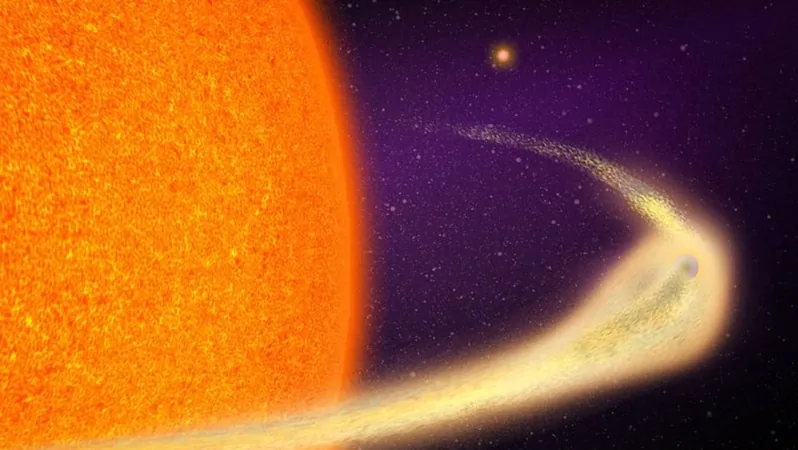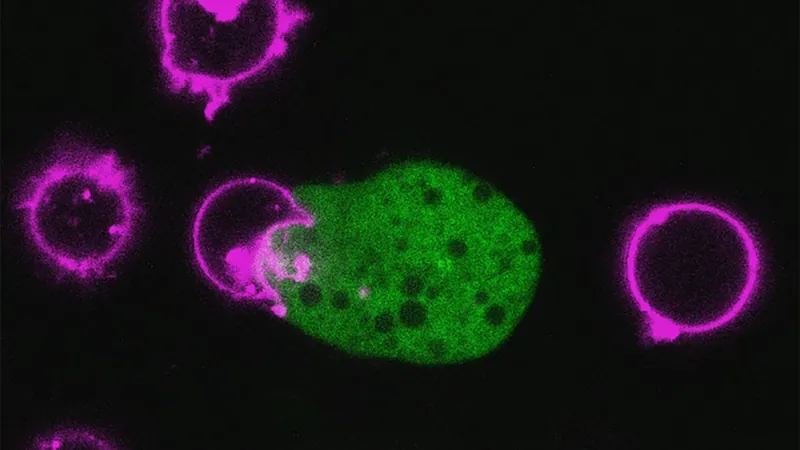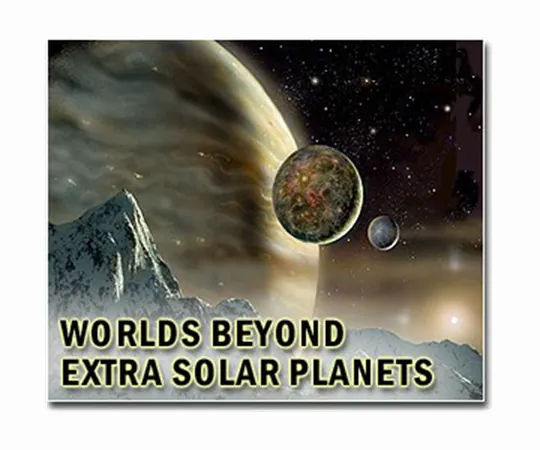
A Stunning Discovery: Planet on the Brink of Oblivion with a Comet-like Tail!
2025-04-22
Author: Arjun
Astronomers Witness Planet Disintegrating Near Its Star
In an extraordinary cosmic event, astronomers have observed a small rocky planet, lurking dangerously close to its host star, disintegrating under intense stellar heat. This planet, trailing a comet-like tail of mineral dust measuring up to an astonishing 5.6 million miles (9 million kilometers) long, is offering scientists an unprecedented glimpse into the fate of such celestial bodies.
A Rare Find Among Exoplanets
Since the 1990s, astronomers have discovered around 5,800 exoplanets, but only four have shown signs of disintegration—making this rocky world, named BD+05 4868 Ab, particularly special. Located just 140 light-years away in the constellation Pegasus, it is the closest of the four disintegrating planets, providing a golden opportunity for researchers to explore the processes at play in these unfortunate worlds.
Losing Mass at an Alarming Rate
As it orbits its star every 30.5 hours, BD+05 4868 Ab is shedding material equivalent to the mass of Mount Everest with each pass. The planet's surface is believed to be nearing a molten state, with temperatures reaching close to 3,000 degrees Fahrenheit (about 1,600 degrees Celsius). This extreme heat contributes to its rapid disintegration.
What's Next for This Doomed World?
Lead researcher Marc Hon from MIT predicts that within the next million years, BD+05 4868 Ab could be completely reduced to cosmic dust. "The disintegration is a runaway process—more material turning to dust accelerates the disintegration," he explained.
A Mystery to Solve: What Changed Its Orbit?
The origin of BD+05 4868 Ab's perilous orbit remains a mystery. It's possible it formed farther from its star and was later pulled in by the gravitational pull of another celestial body. This intrigue adds another layer of complexity to this fascinating discovery.
The Future of Observations and What We Can Learn
Using NASA's cutting-edge James Webb Space Telescope, researchers aim to analyze the composition of the dust tail, which could unveil secrets about rocky exoplanets in general. The tail is likely composed of vital minerals that reveal insights into the planet's crust, mantle, or even core.
A Unique Opportunity for Exoplanet Geology
This exceptional setup offers a rare chance for scientists to understand the diversity and potential habitability of rocky worlds beyond our solar system. As Hon stated, this research could pave the way for future discoveries about the interior compositions of distant planets—something that has proven challenging even within our solar system.
Stay tuned as we continue to follow this incredible story, witnessing the magnificent yet tragic demise of a cosmic world!





 Brasil (PT)
Brasil (PT)
 Canada (EN)
Canada (EN)
 Chile (ES)
Chile (ES)
 Česko (CS)
Česko (CS)
 대한민국 (KO)
대한민국 (KO)
 España (ES)
España (ES)
 France (FR)
France (FR)
 Hong Kong (EN)
Hong Kong (EN)
 Italia (IT)
Italia (IT)
 日本 (JA)
日本 (JA)
 Magyarország (HU)
Magyarország (HU)
 Norge (NO)
Norge (NO)
 Polska (PL)
Polska (PL)
 Schweiz (DE)
Schweiz (DE)
 Singapore (EN)
Singapore (EN)
 Sverige (SV)
Sverige (SV)
 Suomi (FI)
Suomi (FI)
 Türkiye (TR)
Türkiye (TR)
 الإمارات العربية المتحدة (AR)
الإمارات العربية المتحدة (AR)